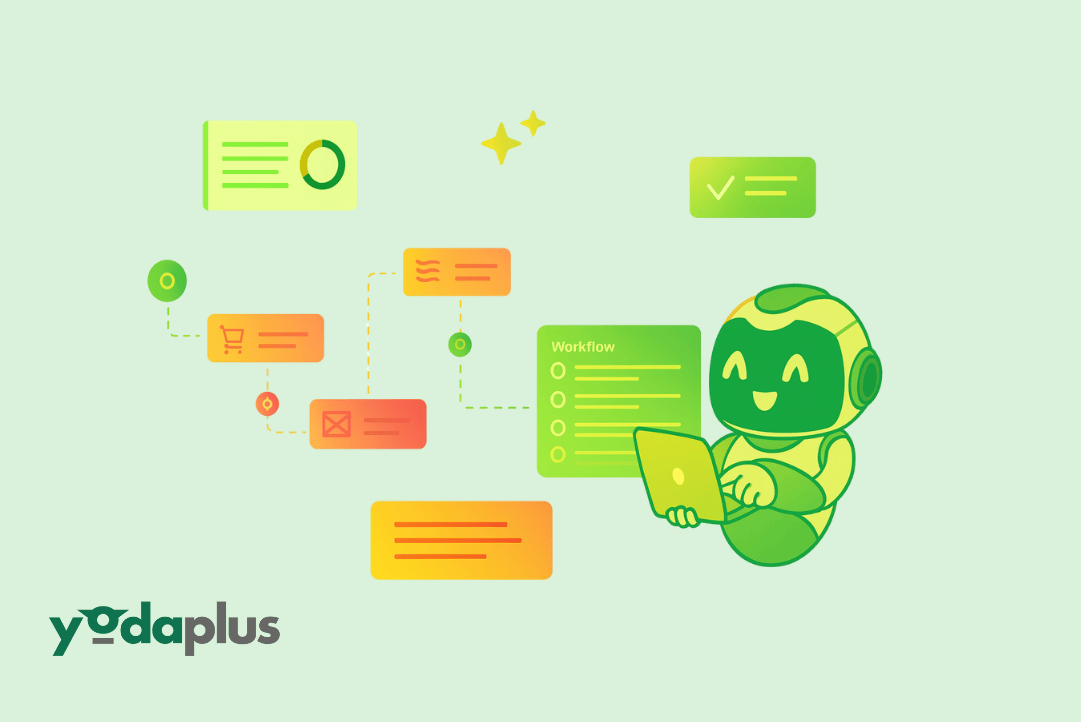
Designing Memory-Driven Personalization in Agentic AI Workflows
October 28, 2025 By Yodaplus
Artificial Intelligence (AI) has made it possible for systems to learn, adapt, and interact like humans. But true personalization in Agentic AI requires more than data and logic. It needs memory: a way for AI agents to remember past interactions, understand preferences, and apply context intelligently. Memory-driven personalization is the bridge between static automation and adaptive intelligence. It allows AI systems to evolve with each user, making interactions more relevant, efficient, and human-like.
Why Memory Matters in AI Personalization
Personalization in AI technology depends on how well an agent understands users and adjusts its behavior. Just like people, AI agents need short-term and long-term memory to interpret context.
-
Short-term memory helps in remembering immediate interactions, such as a user’s recent query or task.
-
Long-term memory stores broader patterns like preferences, habits, and decision styles.
By combining these memory layers, AI agents can deliver more meaningful and consistent experiences across platforms. This approach enhances AI applications such as chatbots, virtual assistants, and recommendation systems.
How Memory-Driven Workflows Function
In Agentic AI platforms, memory acts as the core component that connects perception, reasoning, and response. Each agent uses data mining and machine learning techniques to analyze past actions and predict user needs.
Here’s how a memory-driven workflow typically operates:
-
Data Collection: The system gathers information from user interactions, preferences, and environment data.
-
Context Building: NLP (Natural Language Processing) and LLMs (Large Language Models) help interpret meaning and tone.
-
Decision Layer: Memory stores outcomes of previous interactions, improving the next response.
-
Personalized Output: The agent adapts its tone, suggestions, and solutions based on user history.
This cycle allows the system to refine itself continuously. Generative AI adds further flexibility by producing context-aware outputs that align with user intent.
The Role of Agentic AI in Personalization
Agentic AI frameworks are designed to enable autonomy, adaptability, and collaboration between multiple agents. These systems use memory not just to react but to plan and coordinate.
For instance, Crew AI models use a shared memory pool to let agents learn from each other’s interactions. This coordination helps improve outcomes in workflows such as customer support, research analysis, and content generation.
In real-world Agentic AI use cases, this technology can:
-
Automate responses while preserving tone and context.
-
Predict user goals and suggest the next best action.
-
Adjust workflows dynamically across devices or channels.
This makes memory a foundation for building Agentic AI solutions that feel intelligent and personalized.
Designing Memory in Agent Workflows
When building Agentic AI tools, memory systems should be designed with three main goals:
-
Retention: The ability to store data from user interactions securely and efficiently.
-
Recall: Fast retrieval of relevant information when context is needed.
-
Relevance: Filtering unnecessary data to prevent outdated or repetitive responses.
A well-designed memory structure can balance adaptability and accuracy. Through AI technology such as neural networks and Generative AI, systems can refine what they remember and how they respond, maintaining a consistent yet personalized interaction flow.
Benefits of Memory-Driven Personalization
Integrating memory into AI applications offers several key advantages:
-
Improved Accuracy: Agents use stored context to avoid repetitive questions or errors.
-
Adaptive Learning: The system evolves with user behavior through machine learning.
-
Human-Like Interaction: NLP and memory-based context make communication more natural.
-
Cross-Platform Consistency: Information is synchronized across different Agentic AI platforms.
This combination ensures smoother and more intuitive digital experiences.
Future of Personalized Agentic AI Systems
As Generative AI and LLMs continue to advance, memory will play an even bigger role in personalization. Agents will use feedback loops to adjust their tone, reasoning, and decision-making, creating a seamless connection between humans and AI.
In the near future, Agentic AI solutions will integrate shared memory across systems, allowing multiple agents to collaborate in real time. These developments will lead to smarter, self-improving AI applications that understand users better with every interaction.
Conclusion
Designing memory-driven personalization in Agentic AI workflows helps move AI from being reactive to being truly intelligent. It blends data mining, machine learning, and NLP with contextual memory to create adaptive, human-like experiences.
As AI technology continues to evolve, memory will remain at the heart of personalization, making Agentic AI tools more powerful, reliable, and relevant across industries.